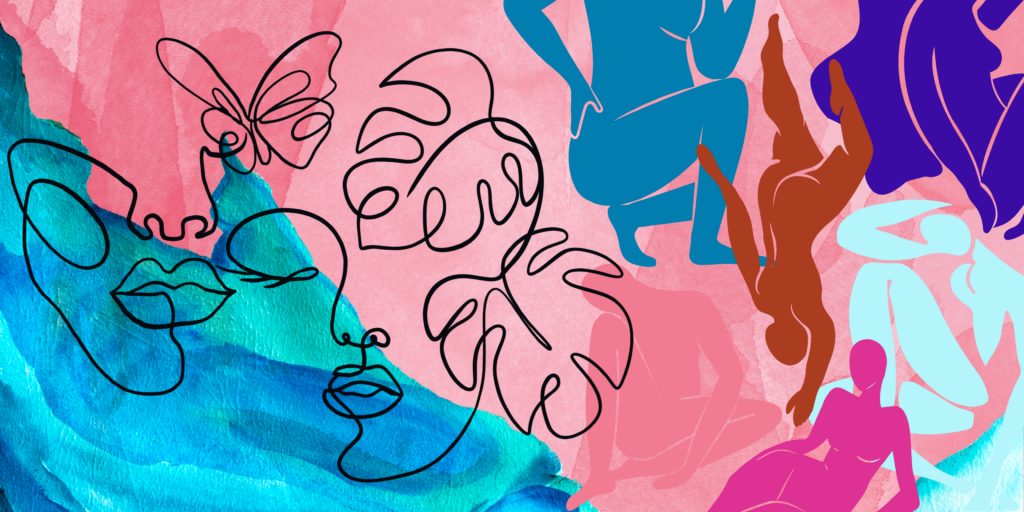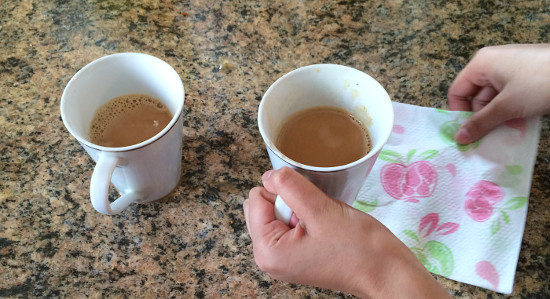What Totaram Sanadhya’s short story tells us about the space for solidarity

June 16, 2022
I first encountered Totaram Sanadhya’s writing while researching Indian indenture in Fiji and Trinidad for my academic work. Sanadhya (1876–1947) had been an indentured laborer (known as a girmitiya) in Fiji, but went back to India in the early twentieth century to campaign against the global system of indenture. The British Empire imported indentured laborers from South Asia to work the sugar fields of the Caribbean almost immediately after abolishing slavery in 1835. Indenture ensured the continued use of cheap labor on the sugar plantations, as planters did all they could to avoid paying fair wages to newly-emancipated Africans. The system of indentured labor would remain in place until 1920, sending nearly eight million workers around the globe. What began in the Caribbean would later be used to supply cheap labor in Mauritius, Fiji, East Africa, and Southeast Asia for producing sugar, rubber, and cocoa, as well as building the railroads.
I turned back towards Sanadhya’s work while writing my debut novel, Mother Ocean Father Nation, set in a fictionalized South Pacific island undergoing a military coup in the mid-1980s that fractures a nation along colonial lines: the descendants of indentured Indians on one hand, an economically disenfranchised native population on the other.
Many former British colonies with large indentured Indian populations experienced a fair amount of racial strife in the mid- to late twentieth century: the deadly 1964 anti-Indian riot in Wismar, Guyana; the 1972 expulsion of Indians from Uganda; the 1987, and 2000 coups in Fiji. All these events had their own immediate contexts, but each instantiation was a mark on a timeline of instability and animus.
I wanted to write this background into Mother Ocean Father Nation, but how? The answer, it turned out, was through a little-known short story written by Sanadhya in 1922.
There is a paucity of firsthand records of life under indenture, but this began to change in the 1910s as the nationalist movement in India gained steam. Many in the Indian National Congress, as well as those in Gandhi’s orbit, began to look to the plight of Indians abroad as part of the struggle for freedom from British colonial rule. In fact, Gandhi spent his last years in South Africa mobilizing indentured and working-class Indians.
As part of this agitation, nationalists, including figures such as the writer and journalist Banarsidas Chaturvedi and the Hindu missionary and anti-indenture activist S. M. Saraswati, sought out and amplified the firsthand accounts of indentured workers, including those of Totaram Sanadhya.
Sanadhya was born in 1876 in Firozabad (near Agra in modern-day Uttar Pradesh, India’s largest state). Believing the stories told by a recruiter in India, he signed a contract to set sail to Fiji in 1893. There, he was indentured to the Colonial Sugar Refining Company’s plantation in Nausori, just north of the capital, Suva. After completing his five-year contract, he began a course of self-directed religious study and became quite well-read in Hindu texts. Inspired after reading in a Fijian newspaper about Gandhi’s work in South Africa, he later collected £40 on behalf of the British Indian Association to bring a Gandhi-affiliated barrister to Fiji to fight for the rights of indentured Indians. After Sanadhya returned to India in 1914, he worked with Indian nationalists to showcase the plight of Indians in Fiji.
Sanadhya was mainly known for his 1914 tract, Fiji Mein Mere Ekkis Varsh (My Twenty-One Years in the Fiji Islands). Originally published in Hindi, the book was translated into several South Asian languages and was even adapted into a play. Despite its immense popularity and the instrumental role it played in bringing down the indenture system, the book languished in obscurity until it was translated into English in 1991.
That same year, Fiji indenture scholars Brij Lal and Barry Shineberg translated a short story Sanadhya had written and published in the Hindi-language journal Maryada in 1922. Titled “The Haunted Line,” the story is presumably a work of autofiction, narrated by an unnamed man indentured to the Colonial Sugar Refining Company in Nausori.
Most of it reads as a tract against indenture. The narrator arrives on the plantation with 140 others, and every other worker is given accommodation except for him. “The overseer told me that as there was no room left in the lines,” the narrator says. A line, or a barrack, featured twenty-four rooms that were a little under a hundred square feet. Each room housed either three single men or an entire family. “I would be placed in the haunted line,” he continues.
The haunted line had been abandoned after eight native Fijian residents had died there from some unknown illness. “No one would agree to live there and no one walked past it at night,” he notes. “New arrivals who went there unknowingly would run away in fear as soon as they found out the truth about the place.” But the narrator is given no choice: the overseer says if he leaves his line, he will be imprisoned.
The line itself is dingy, surrounded by tall grass and the “deafening noise of the engines of a sugar mill.” Immediately there is a bad omen: the narrator is swarmed by mosquitoes and is covered in welts. He watches as two rats are smothered by them, too, unable to escape. He is given his weekly food ration and is aghast at the miniscule portion. On top of that, he is commanded not to barter or share any food. “What a country this is,” he thinks to himself, “where sharing a food is an offence punishable by imprisonment.”
He begins to do readings of the Gita with a man named Baiju, and finds calmness in spiritual outlets. Others notice that the ghost of the haunted line does not bother him. Thinking that he must have some supernatural powers to keep the ghost at bay, they bring sick children to him to cure.
As the story progresses, the narrator wanders from line to line. He visits the lines for Indian women and launches into a pointed critique of indenture, and in the process, criticizes India (Bharat) itself:
To think that they had come from India, the land which the Bhagvat Gita says the gods considered to be a privilege to be born in . . . Bharat, you are no longer the country you once were. Today, Indian mothers and sisters, separated from their parents, husbands and sons, are found in the coolie lines of Fiji . . . You seem to have lost your manly strength: don’t you have any concern for your self-respect?
This itself was unsurprising: one of the major streams of thought in nationalist and anticolonial movements was that British colonialism stripped women of their essential Indian and feminine virtues. This was not a radical critique: indenture threatened Indian womanhood by taking them away from India, and in the process, removing the bonds of traditional (read: patriarchal) life.
In the middle of the story, the reader encounters a Chekhovian gun: the narrator entertains a number of guests who hail from his place of birth. He uses up all his weekly rations to feed them, and has four days to go before he can get a new batch. Importantly, he notes he does not clean his pots after the gathering—there is no more food, so he feels no need to clean. He is then sent to labor in the fields for hours, now without any food. By the second day, he feels “sharp pangs of hunger,” and breaks out “into a sweat and beg[ins] to hallucinate.”
In his fit of hallucination, he sees his family and tells his mother that he is dying of hunger. She admonishes him to never go to a foreign country and feeds him water and buttermilk. He opens his eyes and realizes he is in the haunted line. The overseer comes the next day and sends him back to the fields, but he is feeble, unable to stand up. The overseer initially doubts his illness, but finally sends him to the hospital. They see nothing wrong with him and send him back to the haunted line.
The narrator begins to lose faith and pleads with God: “At the moment, I am completely helpless. I see everyone here suffering, but my plight is unbearable.” He prepares a noose by tying a rope to a beam. As he is about to hang himself, there is a knock on his door, then window. When he asks who it is, a figure at the door replies, “Yes, I am a ghost. Open the door.” But rather than a ghost appearing, four indigenous Fijians enter the room. One knows a little Hindi and is able to communicate with the narrator, telling him that he had once lived in the lines but had run away after witnessing eight of his friends die.
Like the narrator, they too are returning from the precipice of death—in their case from a funeral—and they are quite hungry. The group notices the old pot on the stove and asks if there’s anything in there. When the narrator lifts the lid, he finds a bit of forgotten rice left over from when the he had entertained his guests, and these men are now able to share it.
Three of the men leave and return with sweet potato, yams, and other vegetables: a feast to share. One notices the noose hanging from the rafters and unties it, asking the narrator if he can use it to tie up his boat in the river. The four men leave him, and soon the sun rises on a new day. “Slowly the darkness disappeared. People were up and about. Soon it was daylight and the beginning of a new life for me.”
The narrator had spent most of the story finding the various ways in which indenture poisoned the soul, gesturing towards a conservative critique of indenture whereby Indians had been cut off from their homeland, effectively depriving them of a so-called traditional way of life, including a women’s place in the home or conventional and restrictive caste relations.
But in the end, the narrator’s salvation comes not from India, but from the friendship and camaraderie of a group of native Fijians—a remarkable intersectional turn.
In my novel, Mother Ocean Father Nation, a brother and a sister are left to navigate their lives in the wake of a nationalist coup with overt racial overtones. The postcolonial politics of race and belonging in the unnamed and fictionalized nation I depict are drawn from the histories of indenture colonies in places such as the Caribbean, East Africa, and the South Pacific. In the decades after decolonization, many of these places experienced political instability that dovetailed with the colonial policies that had kept races as separated as possible. Independence from British imperial rule had opened up a question: To whom did the nation belong? Did a native population (or in the Caribbean, a formerly enslaved population) take precedence over Indians brought in to work the fields or build the railroads?
Reading and rereading Sanadhya’s story laid bare that this kind of hatred can never be reduced to a simple binary. There were always spaces for solidarities, however fleeting they may have been.
If first-person accounts of indenture are rare, accounts that bring in the agency and possibility of cross-racial solidarity are perhaps even rarer. I’ve kept “The Haunted Line” close when writing through the political horrors that contextualize my novel. The story is a reminder that the world we’ve inherited was not one necessarily dreamed by those in the past, and dreams like those in the haunted line deserve to be held close, a forgotten light to guide us through the dark.
This essay is part of Sleeper Classics, a series in The Margins on under-appreciated works of Asian, Asian diasporic, and Asian American literature.




